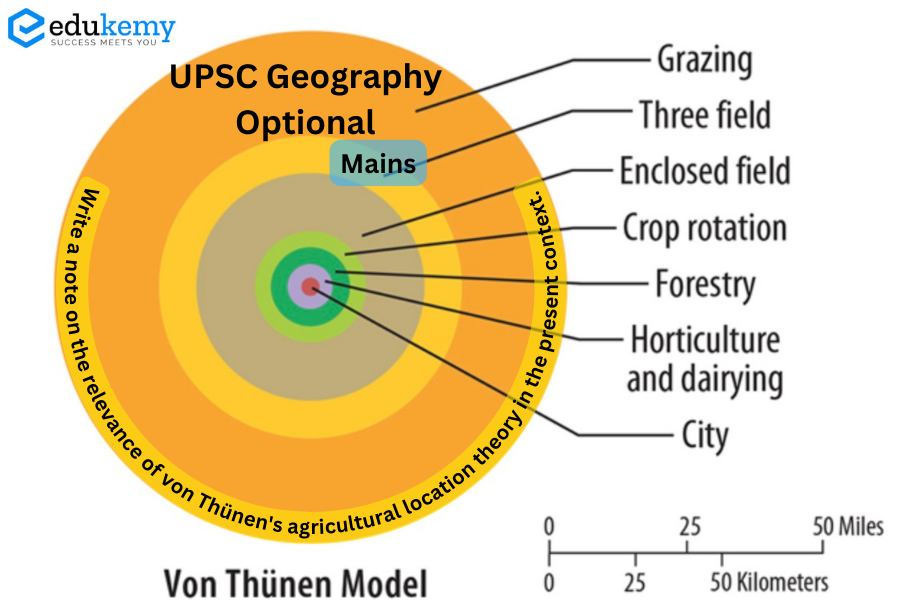
Von Thünen’s Agricultural Location Theory was proposed by German economist Johann Heinrich von Thünen in the 19th century. The theory provides valuable insights into the spatial organization of agricultural activities based on the principles of market forces, transportation costs, and land rent gradients. It remains highly relevant in the present context of agricultural geography and land use planning.

Relevance of von Thünen’s agricultural location theory in spatial organization of agricultural activities:
- It emphasizes the significance of proximity to markets in determining the spatial distribution of agricultural land use.
- Perishable and high-value crops are cultivated closer to urban centers, while extensive and low-value crops are grown farther away.
- This principle still holds true, as farmers strategically locate their farms based on market accessibility and transportation costs.
- For example, peri-urban Dairy Farms around major cities, producing perishable milk often locate strategically to balance transport costs with access to fresh feed and water resources.
Relevance of von Thünen’s agricultural location theory in optimizing supply chains:
- Theory emphasizes transport costs as a key factor.
- Modern farms with large-scale operations consider this principle.
- For example, locating grain farms (low value/weight ratio) further from cities compared to vegetable farms (high value/weight ratio) that benefit from proximity to urban markets.
Relevance of von Thünen’s agricultural location theory in understanding land rent gradients:
- Theory highlights the concept of land rent gradients, where land rent decreases with distance from the market center due to transportation costs and land quality variations.
- This gradient influences farmers’ decisions on crop selection and land use intensity.
- In modern agriculture, land rent gradients continue to shape land use patterns, with more intensive and profitable crops cultivated closer to urban areas where land rent is higher, while extensive and lower-value crops are grown in rural hinterlands.
- For example, California’s Central Valley where closer to urban areas, intensive farming produces high-value fruits and vegetables. As distance increases, lower-value crops like grains dominate the landscape.
While the world has become more complex, the core principle of considering transportation costs in relation to product value remains relevant for optimizing agricultural decision-making in the 21st century.
In case you still have your doubts, contact us on 9811333901.
For UPSC Prelims Resources, Click here
For Daily Updates and Study Material:
Join our Telegram Channel – Edukemy for IAS
- 1. Learn through Videos – here
- 2. Be Exam Ready by Practicing Daily MCQs – here
- 3. Daily Newsletter – Get all your Current Affairs Covered – here
- 4. Mains Answer Writing Practice – here

